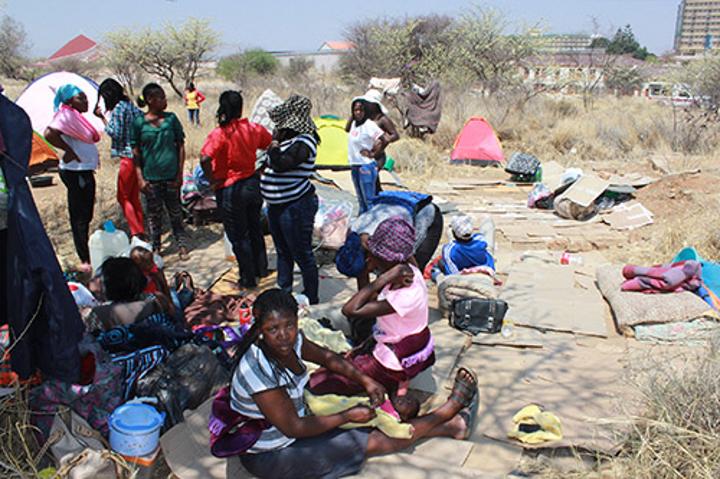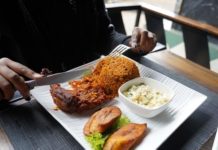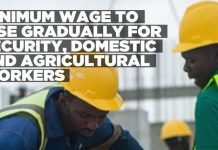Africa-Press – Namibia. A SHOCKING 1,6 million people in Namibia are living in poverty, as defined by the World Bank.
This is a result of 200 000 more Namibians being pushed into poverty during the first year of the Covid-19 pandemic, according to the latest World Bank overview of the country.
“The pandemic mostly affected already vulnerable people, which threatens to widen social gaps further and increase already extremely high inequality,” the World Bank said.
The number of poor people in Namibia is measured in terms of the upper middle-income poverty line at N$84,43 (US$5,5) per person per day using the 2011 purchasing power parity terms.
The World Bank report further stated that Namibia’s past economic growth has not been enough to deal with the country’s triple challenge of high poverty, inequality, and unemployment.
It said more than 12 000 workers were retrenched in 2020, as businesses continued to struggle to sustain jobs due to Namibia’s slumping economy, worsened by the coronavirus pandemic.
Severe drought conditions experienced in 2019 constrained agricultural output and led to a sharp decline in harvests. Namibian farmers between October 2018 and August 2020 lost about 90 000 cattle to drought.
“The reduction in precipitation also affected the broader economy through lower electricity and water generation, with repercussions on industrial production. These developments, along with lower diamond and mineral production due to reduced global demand and falling prices, in a context of much-needed fiscal consolidation, have created challenging conditions for growth,” the World Bank stated.
The World Bank believes that the growth outlook is subject to significant uncertainty, given the unknown profile of the pandemic and likelihood of further restrictions in activity, if additional infection waves emerge.
“Structural policy reforms will be required to raise Namibia’s growth potential,” it stated. Currently, the country has roughly 773 463 people receiving social grants funded by a budget of N$5,4 billion meant for social safety net programmes.
According to a study conducted by the United Nations Development Programme (UNDP), the pandemic has pushed the informal sector back into survival mode, relative poverty and unemployment. At least 51,9% of the working population in Namibia earn their livelihoods in the informal economy.
“Other ways the pandemic has affected business operations include reduced opportunities to meet with customers due to business closures, limited access to markets, and physical distancing measures,” the report states.
Namibia has 576 000 youths of which 265 770 are unemployed. The highest qualification of 229 259 (31%) of the young labour are Grade 10 holders, while those with qualifications account for a mere 39 998 in the force. This is according to the United Nations Population Fund’s national youth policy report of 2021.
Namibia also has the second-highest inequality and unemployment rate in the world, with 50% of young people unemployed. According to last year’s United Nations global report on food crises, 800 000 Namibians are constantly stressed about where their next meal will come from, and 400 000 of these people need humanitarian aid.
Windhoek is regarded to be 34,7% more expensive than Cape Town in South Africa. Only 34% of the country’s population has access to good sanitation facilities, which is 14% less in rural areas, UNDP Namibia states in a similar report.
Caught with our pants down Senior economist Omu Kakujaha-Matundu said the pandemic “caught us with our pants down” as it struck at that very moment when the country’s public finances were in bad shape.
“First, it is for the government to, as fast as it can, identify those thrown into food poverty as per the World Bank report and add them to the food bank or food relief,” he said.
He also suggested that the government expand school-feeding programmes to all schools in poor neighbourhoods. Second, zero rate VAT on essentials such as maize meal, oil and milk.
“Thirdly, parliament should take this situation seriously and pass a Covid-19 poverty alleviation law stipulating particular modalities/measures on how to support the urban and rural poor.
“Fourthly, approach the UN and other development partners for support towards Covid-19 food poverty programmes,” Kakujaha-Matundu said. Unemployment crisis hit before Covid
The chairperson of the Basic Income Grant (BIG) Coalition, Herbert Jauch, said that the employment services offered by the labour ministry that register vacancies and job-seekers in the hope to facilitate employment are not enough to confront the crisis.
“A far greater and very deliberate economic intervention will be needed to create thousands of new jobs. This was already outlined in the second national employment policy of 2013, which was poorly implemented and thus could not alleviate the unemployment crisis which hit us long before the Covid-19 pandemic,” Jauch said.
He also pointed out that the government has not been able to present a coherent strategy to redress unemployment and “mere statements” of intent, coupled with appeals for foreign investment will not suffice. “Instead, deliberate structural changes to the Namibian economy are urgently needed,” Jauch added.
FUEL AND FOOD The rising food prices and the loss of school feeding programmes due to the closure of schools have aggravated food insecurity in Namibia, especially among poor households, UNDP Namibia warns.
Last year, analysts warned that if Namibia’s food and fuel prices continue to rise at the current rate, many poor communities would face severe hunger and would not be able to afford transport.
Since the start of the Covid-19 pandemic, many Namibian households have been hit hard financially, especially the poor. Food supply chains have been disrupted, and prices continue to skyrocket.
“A poor household may spend 60% or 70% of its income on food, while wealthy households may only spend 10% or 20% of their income on food. Increased food prices hit poor people, especially hard,” Jauch says. The price of food and fuel has continued to rise significantly last year, and has surpassed the current inflation rate.
According to the Namibian Consumer Price Index, as released by the Namibia Statistics Agency in January 2021, the annual inflation rate has increased to 2,7% from 2,1% recorded in January 2020. The public service sector, which employs over 60% of the country’s workforce, has had no salary increase for seven years despite increases in the cost of living. REMEDIES
In an effort to mitigate the devastating impact of the Covid-19 pandemic, president Hage Geingob appointed a business rescue task force. The task force, in its interim report, recommended that the revenue agency and the finance ministry consider tax relief measures and speedier value-added tax refunds, the Social Security Commission to relaunch the stimulus package for employers and employees, as well as the Namibia Investment and Promotion Board to expedite ease of doing business analysis and implementation of service delivery. They also suggested that local authorities address by-laws, “red-tape admin burden” and cost of utilities for particularly small and medium enterprises on a temporary and long-term basis.
Finance minister Iipumbu Shiimi last week said for economic recovery the government is looking at diversifying the country’s export products and its green hydrogen project, among others.
For More News And Analysis About Namibia Follow Africa-Press






